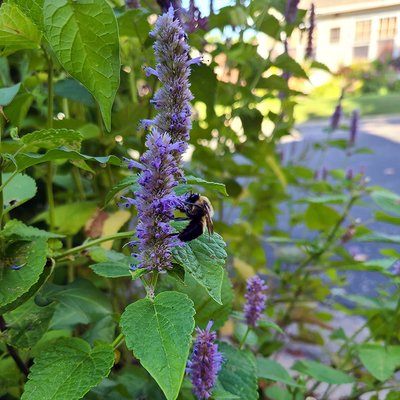After a winter that tried our patience, temperatures are at last holding seasonally steady across most of Minnesota. Trees are quickly leafing out and bursting into flower, bulbs are blooming, and our waterways are flowing. Spring is a great time in Minnesota!
Here’s a list of some of the things Minnesota gardeners can be doing right now for and in your yards and gardens.
Get inspired
Visit the MN Landscape Arboretum to see live plants in action! Shop local garden centers and growers for your garden. Make it a point to add more native and pollinator friendly plants to your gardens and especially those plants that bloom early and late in the season. Plant lists can be found on many Extension Yard and Garden pages.
Plant trees, shrubs and hardy herbaceous perennials
Plant lists can be found on the Extension trees and shrubs page. Gardeners across the state can plant fruit trees, dormant bare root fruit plants like raspberries, and strawberries. Look for University of Minnesota variety releases at MN Hardy and on our Fruits page. Be sure to provide enough water for both newly planted and established plants.
Seed your lawn
Seed your lawn, especially areas damaged by the drought last year. Choose a seed mix that is best suited to your growing conditions. Fine fescues are a favorite of our turf researchers because of their adaptability to various light levels and low nutrient and water requirements.
Do Not prune oak trees!
April through mid-July is the period when the spread of oak wilt is a high risk.
Watch the weather
We are still seeing some evening temps in the 40s. Watch for consistent nightime temperatures in the 50s before planting your warm season vegetables like tomatoes and peppers, annual flowers and seeds like beans and squash.
Northern gardeners still have a couple weeks to go for warm season veggies before the threat of frost has passed, but you can be planting cool season crops like broccoli, kale and other cold crops, spinach, lettuce, and peas. Vegetables A-Z is a good resource for any gardener growing food crops.
Test your soil
If you haven’t done a soil test in the past 3 to 5 years, now would be a good time to get one, especially if you are making a change to an area (lawn to vegetable garden, for example). Submit soil samples to the UMN Soil Testing Lab. Instructions are found on their website. Wait times for the results are about two weeks.
Get your space ready
You can be preparing new garden spaces for planting new gardens: removing turf, tilling, mulching, etc. Place orders for bulk mulch or soil from a commercial processor since the delivery times may be longer than usual.
Subscribe to news you can use
Home Lawn Care, Minnesota WeatherTalk, My Minnesota Woods, Weed of the Month.
Happy gardening!


